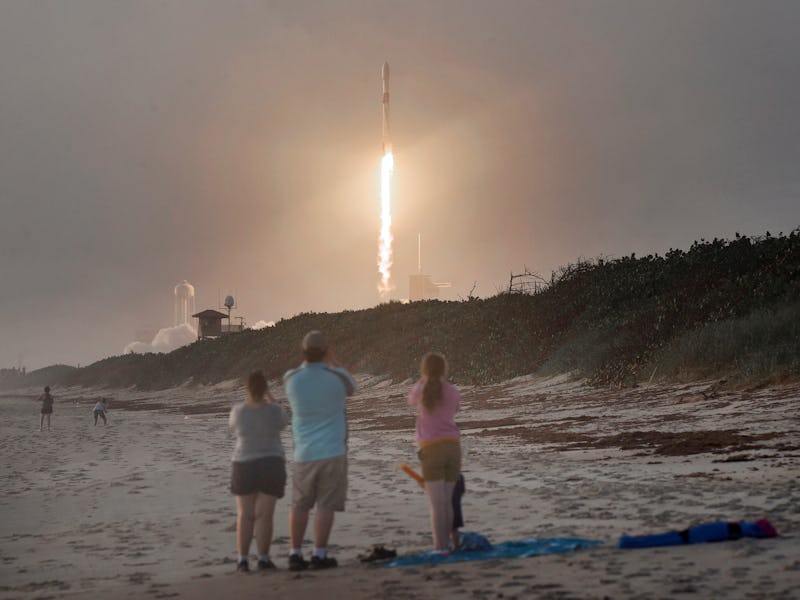SpaceX Starlink may be about to set an incredible record
The firm's internet connectivity constellation is expanding, fast.

SpaceX's rocket launches look set to break a new record, as the firm plans two Starlink launches in quick succession.
This week, the space-faring firm announced plans to launch two missions just over 24 hours apart. Both of them will see Falcon 9 rockets send up the 18th and 19th batches of Starlink satellites, used to power its under-development internet service.
The rockets are taking off from two launch bases located around seven miles apart:
- The first took off on Thursday, February 4, at 1:19 a.m. Eastern. It lifted off from Space Launch Complex 40 at the Cape Canaveral Space Force Station in Florida.
- The second is scheduled for Friday, February 5, at 5:14 a.m. Eastern. It will lift off from Launch Complex 39A at the Kennedy Space Center in Florida.
This means there will be a gap of just 27 hours and 55 minutes between launches. The launch demonstrates the speed at which SpaceX is working to develop its internet service, designed to offer gigabit speeds at low latencies to customers via a satellite dish. SpaceX plans to beat previous satellite connections by orbiting the craft much lower, at 550 kilometers above sea level, and launching many more — up to 42,000.
Each Starlink mission tends to launch around 60 craft at a time. SpaceX has launched over 1,000 craft so far, starting with its first launch in May 2019. The firm rolled out its "Better Than Nothing" beta service in the summer of 2020 for United States customers. Testers in the United Kingdom and Canada had received their kit by the end of 2020.
SpaceX previously two rockets in quick succession in December 2018. On the 3rd, at 1:34 p.m. Eastern time, the SSO-A mission launched from Vandenberg Air Force Base in California. On the 5th, at 1:16 p.m. Eastern time, SpaceX launched the CRS-16 mission from what was then Cape Canaveral Air Force Station.
SpaceX's Falcon 9.
Confusingly, it seems the change of schedule means the first launch will be "Starlink-18," while the second launch will be "Starlink-17."
SpaceX was scheduled to launch "Starlink-17" on Tuesday at 6:19 a.m. Eastern time. This was then pushed back to Wednesday at 5:57 a.m. due to rough weather. It was then scheduled for Thursday at 5:36 a.m., which would have been a record four hours and 17 minutes between launches. A further delay on Wednesday meant the ship would now take off much later.
Thursday's launch also set a record for rocket reuse times. The B1060 booster flew just 27 days prior, supporting the Turksat-5A mission. The previous record, 38 days, was set on January 20 by the "Starlink-16" mission. Both records beat NASA's space shuttle, which only ever reached a turnaround time of 54 days.
Booster B1049, which has flown seven times before, is expected to fly on the second mission. Its last mission was on December 19, 2020.
The Inverse analysis — Assuming the firm sticks to its launch schedule, it would represent an impressive speed for expanding the constellation. SpaceX is working to expand Starlink coverage to other countries later this year, and these launches will help improve the service — currently falling far short of gigabit speeds.
It could pale in comparison to what comes next. SpaceX is currently developing the Starship, a fully-reusable rocket designed to send humans to Mars and beyond. CEO Elon Musk has suggested each ship could support up to 1,000 flights per year, suggesting reflights could reach as often as three per day.
With plans to send people around the Earth in less than an hour, rocket flights could become even more commonplace.
This article was originally published on